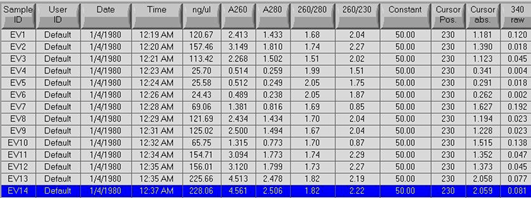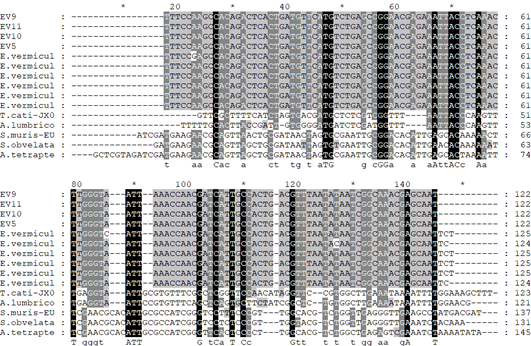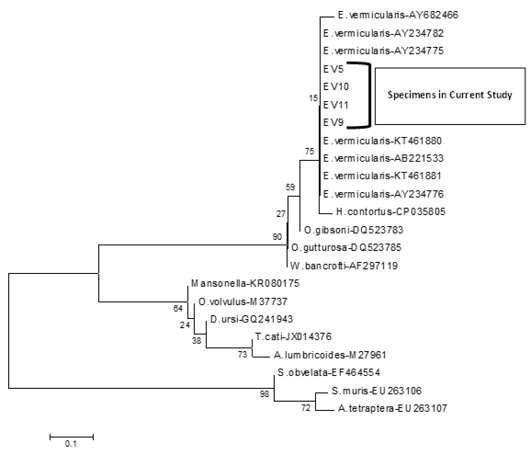The Epidemiology of Enterobiasis and Molecular Characterization of Enterobius vermicularis in Children of Karachi, Sindh, Pakistan
The Epidemiology of Enterobiasis and Molecular Characterization of Enterobius vermicularis in Children of Karachi, Sindh, Pakistan
Syeda Batool Zehra1, Abdullah G. Arijo2, Aly Khan3, Nasira Khatoon1* and Samina Waheed1
Pie chart showing the prevalence of pinworms in children by gender during 2019 to 2020.
The determination of gDNA concentration of Enterobius vermicularis specimens using Nanodrop ND-200 system. The accuracy of gDNA concentrations were calculated using the peaks of absorbance measurements at 260/280 and quantity of DNA was expressed as ng/µl. EV represents Enterobius vermicularis specimens.
Multiple alignment of sequenced specimens of E. vermicularis shows the 100% similarity indicating that all the specimens belong to same species.
Multiple alignment of sequenced specimens of E. vermicularis with other related species.
Evolutionary analysis of pinworms (E. vermicularis) collected during the present study and compared with other related helminths using the phylogenetic tree constructed with neighbor-joining method.
A: The PCR amplification of target DNA fragment of 5S rRNA gene of E. vermicularis shows a 122 bp PCR product on agarose gel. M represents the marker of 100 bp Plus DNA ladder, starting from 100 with gradating band up to 3000 bp (Thermo Scientific). B: The second round of PCR amplification of target DNA fragment of 5S rRNA gene of E. vermicularis shows a 122 bp PCR product on agarose gel. M represents the marker of 100 bp Plus DNA ladder, starting from 100 with gradating band up to 3000 bp (Thermo Scientific). EV represents E. vermicularis specimens.











